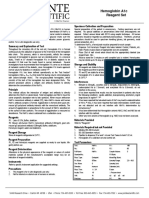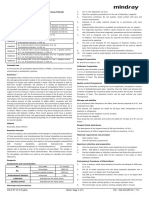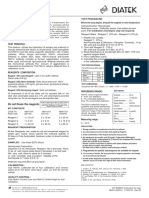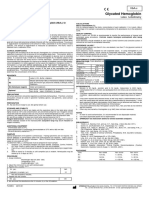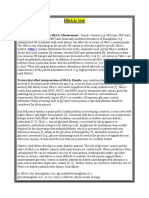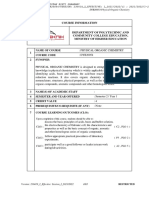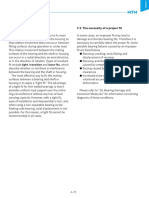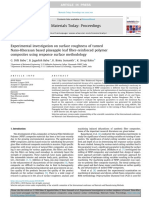0% found this document useful (0 votes)
227 views3 pagesHbA1c Diagnostic Reagent Guide
1. HbA1c (hemoglobin A1c) is a form of hemoglobin that is glycated and reflects average blood glucose levels over the past 3 months.
2. This diagnostic kit provides reagents to quantitatively determine HbA1c levels in whole blood through colorimetric and enzymatic methods.
3. Results are reported as the HbA1c ratio from total hemoglobin and can be used to diagnose and monitor diabetes, as well as prevent late diabetic complications by maintaining optimal blood glucose control.
Uploaded by
Destiya Amalia SCopyright
© © All Rights Reserved
We take content rights seriously. If you suspect this is your content, claim it here.
Available Formats
Download as PDF, TXT or read online on Scribd
0% found this document useful (0 votes)
227 views3 pagesHbA1c Diagnostic Reagent Guide
1. HbA1c (hemoglobin A1c) is a form of hemoglobin that is glycated and reflects average blood glucose levels over the past 3 months.
2. This diagnostic kit provides reagents to quantitatively determine HbA1c levels in whole blood through colorimetric and enzymatic methods.
3. Results are reported as the HbA1c ratio from total hemoglobin and can be used to diagnose and monitor diabetes, as well as prevent late diabetic complications by maintaining optimal blood glucose control.
Uploaded by
Destiya Amalia SCopyright
© © All Rights Reserved
We take content rights seriously. If you suspect this is your content, claim it here.
Available Formats
Download as PDF, TXT or read online on Scribd
/ 3












